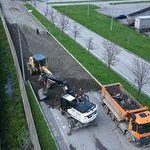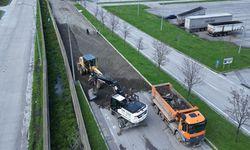In today’s complex landscape of logistics, staying informed is crucial. Navigating various guidelines can be quite challenging. Rules can shift frequently, which makes compliance a moving target. Operators are often left to decipher a maze of requirements. A single misstep can lead to significant penalties.
New laws and modifications can arise without much notice, creating anxiety among professionals. Compliance isn’t just about following rules; it’s about ensuring safety, efficiency, and reputation. Understanding the broader implications of these mandates is vital for any operator aiming for success. By fostering a culture of awareness and adaptability, businesses can thrive even amidst uncertainty.
With the right knowledge, achieving compliance transforms from a daunting task into a manageable endeavor. Taking proactive steps ensures that all aspects of operations align with industry standards. It can enhance not only the safety of drivers but also the overall performance of the company. The journey may be intricate, but the rewards of diligent adherence are immense.
Ultimately, possessing a thorough grasp of these elements contributes significantly to operational success. Organizations can prevent unnecessary setbacks and cultivate a more reliable framework for their operations. The road to excellence begins with informed decisions and a commitment to ongoing education in this ever-evolving environment.
Understanding Trucking Regulations and Compliance

Navigating the landscape of transport operation can be quite challenging. Compliance with numerous laws is essential for success. It involves more than just having a sturdy vehicle and a good driver. Numerous facets require attention, which can greatly impact efficiency and safety.
Fleets must stay updated on various standards. These cover everything from vehicle maintenance to driver qualifications. Regular training for all personnel is vital, ensuring everyone is aware of their responsibilities.
A coherent approach leads to fewer legal issues. On the other hand, overlooking specific aspects can result in costly penalties. It plays a critical role in maintaining high operational standards.
Understanding these obligations enables organizations to foster a secure working environment. Compliance isn’t merely a checklist; it represents a foundational pillar for sustainable operations.
Fleet leaders must adopt proactive strategies to ensure adherence, focusing on continuous improvement and effective communication across their teams. This drives not only the organization’s reputation but also contributes positively to the overall logistics industry.
Key Regulations Impacting Fleet Operations

In the world of commercial vehicle management, several critical standards shape daily activities. These rules govern how businesses operate, ensuring safety and accountability on the road. Operators must navigate this complex landscape carefully. Compliance isn’t just a matter of avoiding penalties; it can influence overall operational efficiency.
Many different aspects are covered by these overarching guidelines. They affect vehicle maintenance, driver qualifications, and operational procedures. Knowledge of these parameters is vital for success. Ignoring them can lead to costly fines or, worse, accidents.
One significant area is hours-of-service requirements. They dictate how long drivers can be on duty and how much rest they need. By adhering to these rules, companies can promote safer driving conditions, reducing the risk of fatigue-related incidents. Additionally, maintenance inspections are essential, as they keep vehicles in optimal working order, preventing breakdowns and ensuring compliance during roadside checks.
Another important factor involves licensing and training standards. Operators must ensure that their drivers hold the necessary certifications. This not only protects the company’s reputation but also enhances overall safety on the roads. Regular training sessions further reinforce these standards, keeping everyone updated on the latest industry changes.
| Regulation | Description | Impact |
|---|---|---|
| Hours of Service | Limits driving hours to avoid fatigue | Enhances driver safety, reduces accidents |
| Vehicle Maintenance | Regular inspections and repairs | Prevents breakdowns, promotes efficiency |
| Driver Qualification | Requirements for certification and training | Ensures skilled operators, reduces risks |
| Transportation of Hazardous Materials | Specific rules for handling dangerous goods | Avoids accidents, protects public safety |
Staying informed is crucial. Regular updates to these protocols can impact strategic planning. Therefore, operators should maintain open lines of communication with industry associations and governmental agencies. This proactive approach helps mitigate risks while enhancing business performance.
Overview of DOT Compliance Requirements
Meeting the standards set forth by the Department of Transportation is vital for any business involved in the transportation sector. These standards encompass several areas that ensure safety and efficiency on the roads. Compliance is not merely a bureaucratic necessity; it also reflects a commitment to safety and responsibility. For those managing transportation operations, understanding these requirements is crucial.
Drivers must possess valid commercial driver’s licenses. Vehicle inspections are mandatory before any trip. This includes both pre-trip and post-trip inspections. Records of service hours must be meticulously maintained. Ensuring that vehicles meet all safety standards is not just recommended; it is a requirement.
In addition, operators must adhere to specific guidelines regarding driver training and drug testing. Maintaining a drug-free workplace is essential for safe operations. Regular audits help ensure that the procedures are being followed and improvements can be made where necessary. Failure to comply can lead to penalties that impact the viability of a business in this competitive market.
Furthermore, operators should regularly review their procedures for transporting goods. Staying informed about updates to these standards helps prevent inadvertent violations. As rules evolve, adapting to those changes is not just wise; it is imperative for long-term success. Engaging with compliance advisors can provide invaluable support in navigating the complex landscape of these requirements.
Importance of Trucking Permits
Permits are a crucial aspect of moving freight legally and safely. They ensure that all transportation activities adhere to specific standards. By obtaining the necessary authorizations, operators can avoid serious complications later. It’s not just about having a vehicle that can carry goods. There are various permits tailored to different types of loads, routes, and jurisdictions.
Without these documents, businesses risk facing hefty fines and unexpected delays. Compliance with permit requirements protects all parties involved. Understanding the local laws is essential for smooth operations. Each state or region may have distinct criteria, making it essential to stay updated.
In addition, certain permits allow for the transportation of oversized or hazardous materials. This ensures that safety protocols and environmental regulations are followed meticulously. For businesses aiming to expand their service areas, obtaining the right permits can open new avenues for growth, ensuring that they can operate across various states and comply with their specific demands.
In summary, trucking permits play an indispensable role in the logistics industry, ensuring both legal operation and public safety. Embracing proper permitting processes can lead to increased efficiency and credibility in the market.
Understanding ELD Mandates
The electronic logging devices (ELDs) are transforming the landscape of transportation. These devices provide accurate tracking of driving hours. This shift aims to promote safety and efficiency. Drivers and managers alike need to be aware of these developments.
ELDs streamline the documentation process by automatically recording driving time. They replace traditional paper logs, which can be prone to errors. In essence, they help ensure that operators comply with prescribed driving limits.
- Real-time monitoring of driver activities
- Reduction in paperwork burden
- Increased accuracy in log submissions
Moreover, the implementation of ELDs contributes significantly to road safety, as drivers are less likely to exceed their regulated hours when using automated tracking systems. This is beneficial not only for the operators but also for the public, promoting a safer driving environment for everyone.
- What are the main benefits of using ELDs?
- How do ELDs impact operational efficiency?
- What penalties exist for non-compliance?
Familiarizing oneself with these devices is key. As the industry evolves, staying informed enables smoother operations and helps adapt to new expectations. Investing in ELD technology may also enhance company reputation.
Hours of Service Regulations Explained
The management of driving time and rest periods is critical in transportation. It ensures safety for drivers and others on the road. Properly observing these guidelines helps reduce accidents and fatigue-related incidents. It is essential for maintaining efficiency in operations while keeping the workforce healthy.
These standards dictate how long a driver can operate a vehicle. They also specify mandatory breaks and off-duty time. Compliance is not just about following rules; it’s about fostering a culture of safety. Each operator needs to grasp the nuances of these time restrictions.
For instance, drivers typically cannot drive more than 11 hours after 10 consecutive hours off duty. Additionally, they must take a 30-minute break after 8 hours of driving. Understanding these limits allows for better route planning, enhancing overall productivity. The implications of neglect can lead to serious penalties, both financially and legally.
Moreover, the regulations provide a foundation for a balanced work-life approach. They encourage operators to consider their staff’s well-being, which ultimately contributes to employee retention. The bottom line is that time management is not simply operational; it has a profound impact on morale and performance.
Strategies for Effective Compliance Management

Proper management of conformity issues requires both a proactive approach and keen attention to details. Implementing a structured framework can significantly enhance success. It consists of several components that, when executed well, create a resilient system. Remember, the right tactics lead to smoother operations and reduced risks.
First, ensure that all personnel are adequately trained. Regular training sessions cultivate a culture of responsibility. They help employees understand their roles in maintaining standards. This continuous education fosters awareness and minimizes errors in procedures.
Next, conduct regular audits and assessments to identify areas that require improvement. A thorough evaluation process reveals compliance gaps and informs necessary adjustments. Moreover, regular reviews build a layer of accountability among team members.
Technology can be a powerful ally. Utilizing software designed for management tasks streamlines data collection and reporting processes. Automation reduces manual errors and saves valuable time. Furthermore, integrating tools for real-time monitoring enables swift corrective actions when needed.
Develop clear communication channels. Open dialogue between all team members helps everyone stay informed about changes or updates. Meetings and newsletters serve as effective platforms for sharing vital information. When communication flows smoothly, compliance challenges can be addressed more quickly.
Finally, it’s crucial to establish a culture that prioritizes integrity. Encouraging ethical behavior reinforces the importance of following outlined protocols. Employees are more likely to adhere to expectations when they recognize their significance in the organization’s future. By fostering this environment, you create a foundation for ongoing success.
Implementing a Compliance Program
Establishing a robust framework is crucial for achieving operational excellence. This framework helps organizations navigate the complexities related to industry standards. A well-defined strategy ensures that all aspects of the organization align with required norms. It facilitates the protection of assets and enhances overall efficiency.
A strong compliance protocol serves numerous purposes. It minimizes risks associated with violations. It reinforces the reputation of the business in the market. Moreover, it contributes to employee confidence and safety.
- Identify the necessary standards and guidelines.
- Assess current operations against these benchmarks.
- Develop training programs tailored to staff needs.
- Integrate technology to monitor compliance efforts.
- Establish a clear reporting structure for any concerns.
The initial phase should involve thorough research to ascertain which mandates apply to the specific domain in question, while also recognizing the unique challenges the organization may face in meeting these expectations.
- Create a compliance team responsible for oversight.
- Draft detailed policies outlining procedures and expectations.
- Regularly review and update the program to adapt to changes.
Continuous education is vital for success; by keeping the team informed about developments and changes, it becomes possible to prevent potential issues and promote a culture of accountability within the organization.
Finally, the importance of regular audits cannot be overstated, as they enable businesses to detect gaps in adherence while providing invaluable insights into maintaining high standards in operations.
Utilizing Technology for Monitoring
The integration of advanced tools in transportation operations offers remarkable benefits. Real-time awareness enhances decision-making processes. With the right technology, businesses can track performance effectively. This not only boosts efficiency but also increases safety. Monitoring systems provide insights that were previously unattainable, helping organizations adapt swiftly.
Modern devices like GPS and telematics applications allow companies to oversee their vehicles continuously. These systems enable operators to evaluate fuel consumption and driver behavior, promoting responsible practices. Furthermore, alerts and notifications help in addressing issues before they escalate into bigger problems, ensuring smooth workflow.
Incorporating data analytics deepens the understanding of operational trends, enabling informed strategies. A fleet manager can optimize routes, thereby saving time and costs. Predictive maintenance tools reduce the risk of breakdowns, which tremendously decreases downtime. Altogether, harnessing such innovative technology not only transforms the management of transportation but enriches the overall service quality delivered to clients, leading to increased satisfaction and loyalty.
Training Drivers on Regulatory Standards
Effective education for drivers is a cornerstone of safe and responsible operations. Every operator should prioritize the transmission of knowledge regarding industry mandates. This knowledge equips drivers to navigate the complexities of their duties seamlessly. Regular training sessions are essential to keep everyone informed. When drivers grasp these standards, they contribute positively to the entire organization.
Moreover, the dynamic nature of rules requires constant updates. As legislation evolves, staying ahead is crucial. An informed driver is less likely to incur penalties. These sessions can cover a variety of topics, from vehicle operation to safety measures. Engaging training methods ensure that information resonates with the participants. Over time, a well-informed team leads to improved operational efficiency and reduced liabilities.
Support is vital beyond formal sessions. Regular discussions can foster a culture of shared knowledge. Encouraging questions allows drivers to clarify doubts promptly. A collaborative learning environment can enhance comprehension significantly. Interactive workshops often yield better retention of information and practical application.
In conclusion, investing in driver training not only safeguards compliance but also cultivates a responsible workforce. This commitment results in lower risks and higher standards of service. Ultimately, a well-informed team translates to operational success and a positive reputation in the marketplace.
Video:
Pro Ride Holdings – Trucking Safety & Compliance.
Pro Ride Holdings – Trucking Safety & Compliance. by Pro Ride Holdings Ltd. 24 views 3 months ago 1 minute, 7 seconds
Q&A:
What are the key trucking regulations that fleet operators must comply with?
Fleet operators must adhere to several key trucking regulations, including the Federal Motor Carrier Safety Administration (FMCSA) regulations, which cover hours of service, vehicle maintenance, and driver qualifications. Other crucial regulations include the Department of Transportation (DOT) standards, vehicle weight limits, and hazardous material transportation rules. Additionally, operators should be aware of state-specific regulations that may impose further requirements on trucking operations.
How can fleet operators stay updated on changing trucking regulations?
Staying updated on changing trucking regulations is essential for compliance. Fleet operators can subscribe to industry newsletters, join professional associations like the American Trucking Association (ATA), and attend relevant conferences. Additionally, using compliance management software can help track regulatory changes. It’s also beneficial to regularly visit the FMCSA website for updates and engage in forums or community discussions with other industry professionals.
What are the consequences of non-compliance with trucking regulations?
Non-compliance with trucking regulations can lead to serious consequences, including hefty fines, increased insurance premiums, and potential litigation. Additionally, repeated violations can result in a poor safety rating, which can affect a fleet’s ability to secure contracts or operate efficiently. In extreme cases, repeat offenders may face penalties such as the revocation of operating authority, which can put them out of business.
What role does technology play in ensuring compliance with trucking regulations?
Technology plays a significant role in ensuring compliance with trucking regulations. Fleet management software can automate record-keeping for Hours of Service (HOS), monitor vehicle conditions, and assist in maintaining regulatory documentation. Telematics systems can provide real-time data on vehicle performance and driver behavior, helping operators to correct issues proactively. Additionally, electronic logging devices (ELDs) streamline the process of tracking driver hours, making it easier to comply with HOS regulations while reducing the risk of human error.
What steps can fleet operators take to create a culture of compliance within their organizations?
Creating a culture of compliance within an organization involves several proactive steps. First, fleet operators should provide comprehensive training programs for drivers and staff on regulations and compliance best practices. Establishing clear communication channels to report issues or concerns without fear of retaliation is crucial. Implementing regular compliance audits and encouraging feedback can also enhance awareness. Furthermore, recognizing and rewarding safe driving habits can motivate employees to prioritize compliance, fostering a positive safety culture throughout the fleet.
What are the key trucking regulations that fleet operators must comply with?
Fleet operators must navigate a variety of trucking regulations that are essential for ensuring safety and compliance within the industry. Key regulations include the Federal Motor Carrier Safety Administration (FMCSA) guidelines, which govern areas such as driver qualifications, vehicle maintenance, hours of service (HOS) requirements, and record-keeping standards. Specifically, drivers must have a valid Commercial Driver’s License (CDL) and adhere to HOS regulations that limit driving hours to prevent fatigue. Additionally, vehicles must undergo regular inspections and maintain compliance with safety standards to protect both drivers and the public. Understanding these regulations is critical for fleet operators to ensure efficient operations and avoid costly penalties.

















